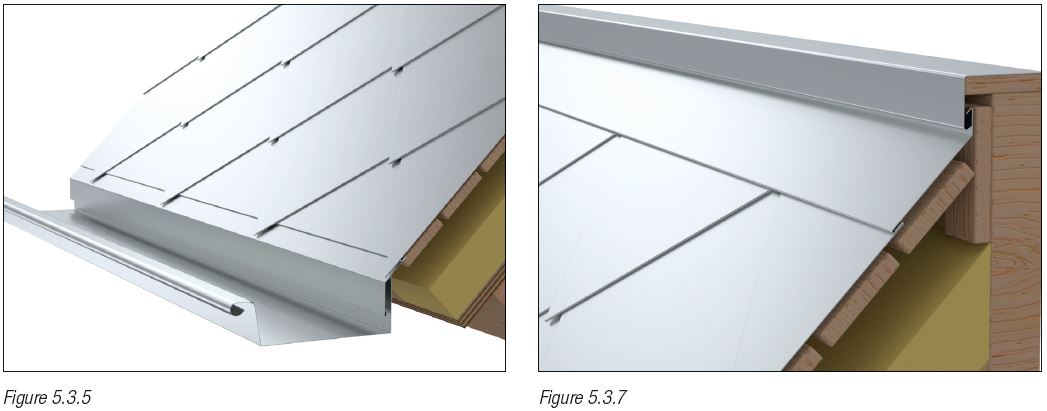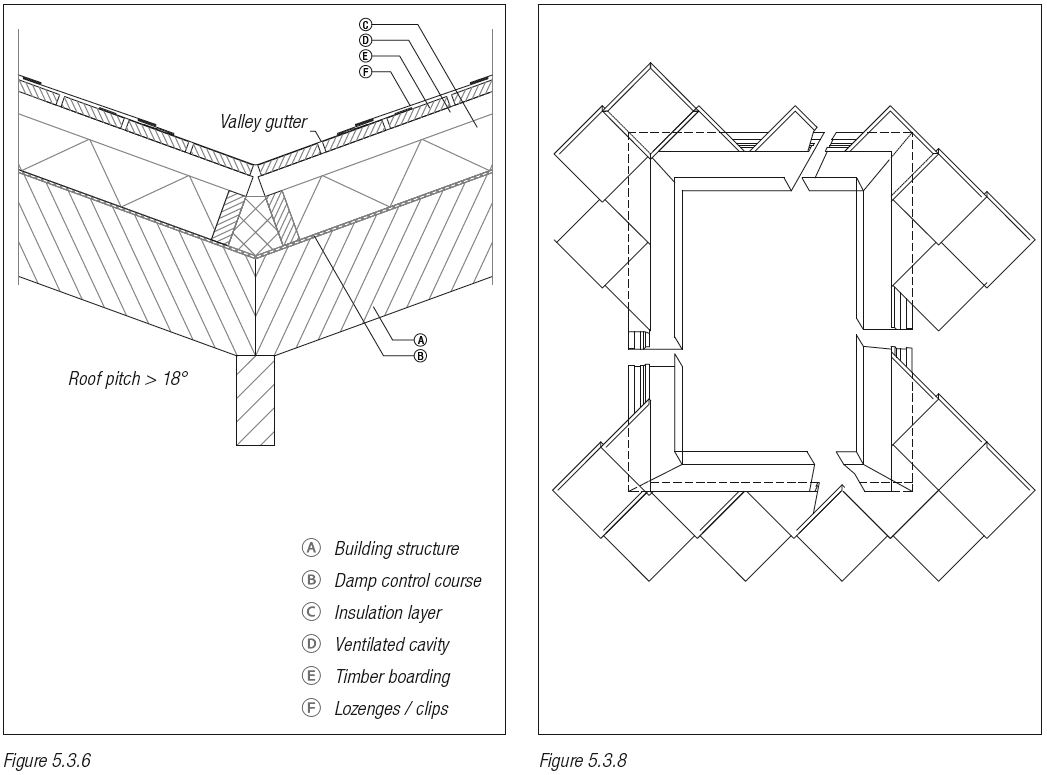Lozenge system
The lozenge system is used for covering large and small sloping and vertical surfaces. The minimum pitch of a zinc roof is 25° or 18° when the vertex of the lozenge is soldered. The standard lozenge system consists of small, uniform bent plates which hook onto each other. The most common form of a lozenge is the square, although the rhombus is also used. The square lozenge is discussed in this chapter. In addition to lozenge, the names zinc tiles or zinc slates are also used.
Lozenges provide a good solution for cladding of moderately curved surfaces. When hooked together, the lozenges form a mosaic of uniform surfaces with the vertical and horizontal diagonals.
See also:
Lozenge system on a ventilated system
Lozenge system on a damp proof system
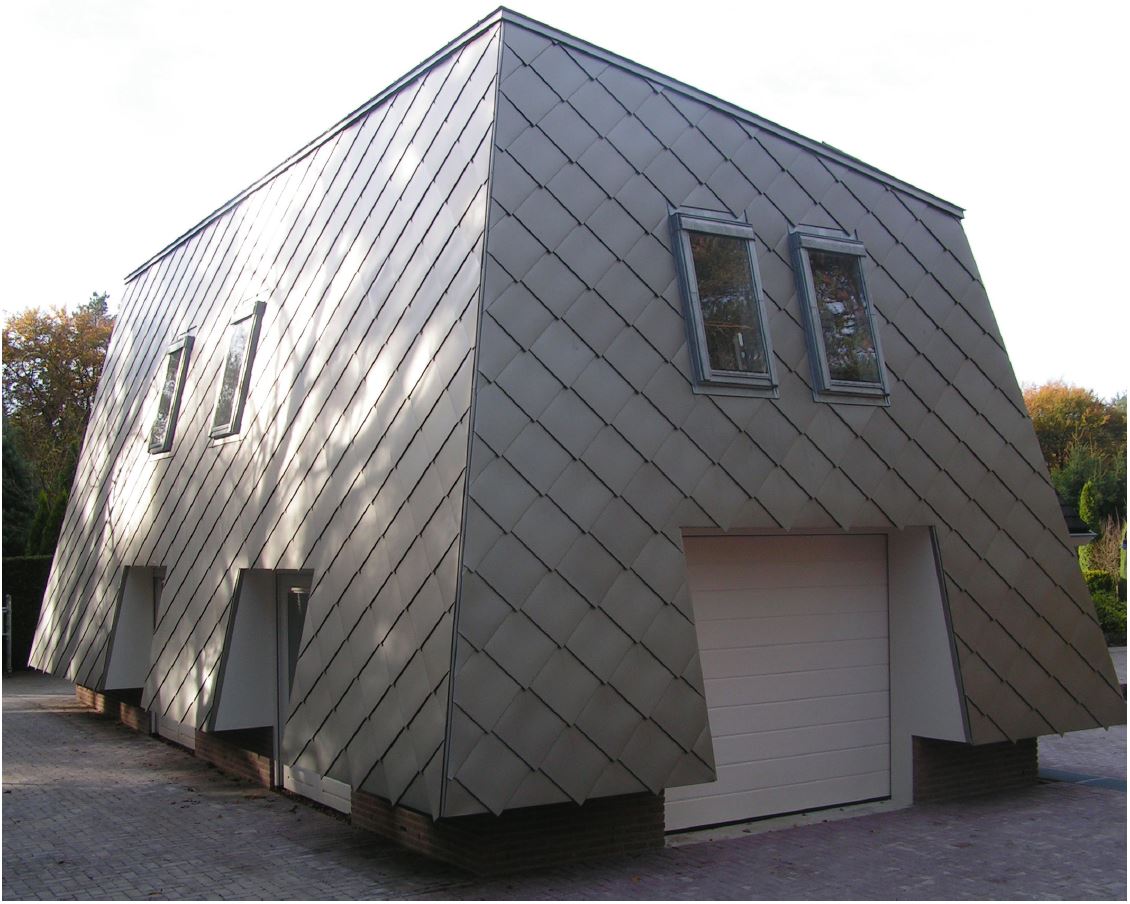
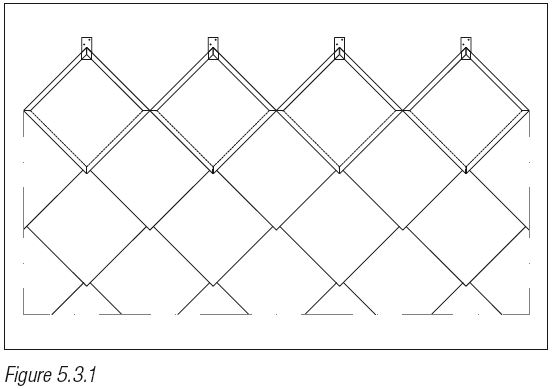
| Lozenge size | Cutting size | Number/m2 |
|---|---|---|
| 450 x 450 mm | 500 x 500 mm | Approx. 5,6 |
| 280 x 280 mm | 330 x 330 mm | Approx. 15,3 |
| 200 x 200 mm | 250 x 250 mm | Approx. 32 |
Tabel 5.3.1 Dimensions of lozenge, square model
Specifications of the parts
Figure 5.3.1 is a schematic representation of the lozenge system. Aside from the standard lozenges, other dimensions are also possible.
The lozenges are bent 25 mm as shown in figure 5.3.2
Figure 5.3.3 A shows the half-lozenge for eaves abutment and figure 5.23.3 B shows the half-lozenge for ridge abutment.
Seizes and material thicknesses are the same as with whole lozenges.
With a “top” half-lozenge, both a sliding clip and a soldered clip can be used.
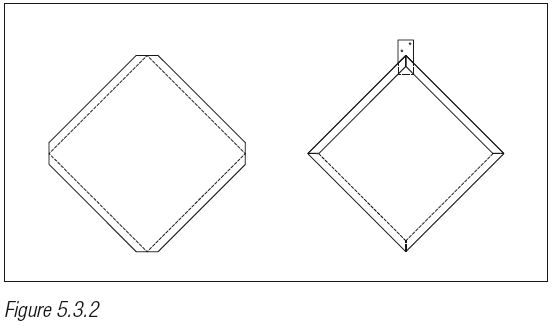
| Lozenge size width ’B’ | Cutting size | Number/m2 |
|---|---|---|
| 200 mm* | 250 mm | Approx. 25,6 |
| 250 mm* | 300 mm | Approx. 15,3 |
| 280 mm* | 330 mm | Approx. 11,9 |
* other dimensions are possible
Table 5.3.2
Sliding clip, 70 mm x 50 mm
Material thickness as for the lozenge. The sliding clip functions as a support clip. These support clips can be made by the sheet metal worker himself.
Soldered clips
Width: 50 mm. Length approx. 100 mm, depending on the location and space for fitting on the base.
The clip can be made by the sheet metal worker himself and soldered to the lozenge.
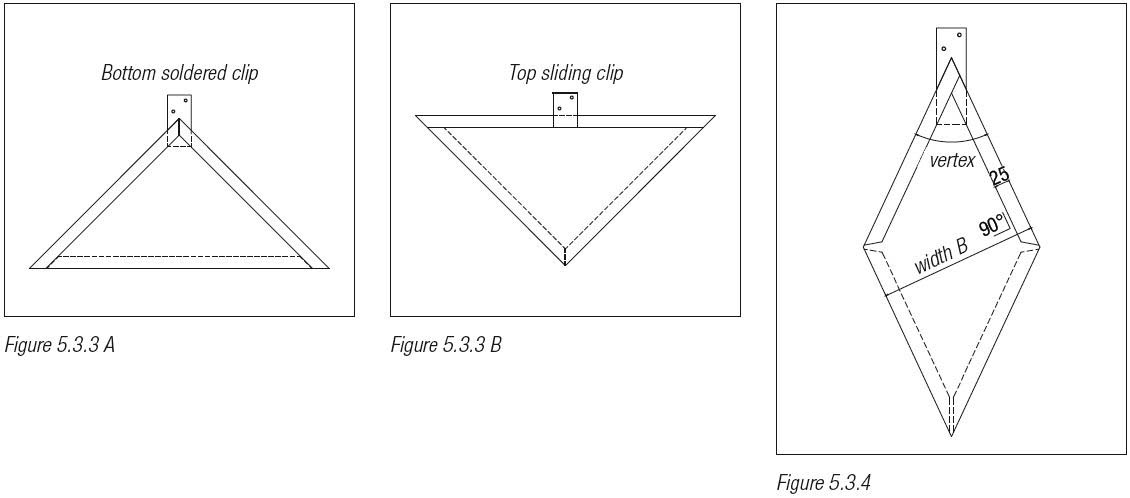
Profiles
The dimensions of the eaves profiles, attachment profiles, etc. will depend on the on-site dimensions and can either be made by the sheet metal worker or supplied custom-made in lengths as custom items.
Support
The lozenge roof must be fully supported by unplaned, untreated wooden boards at least 23 mm thick, not tongue and grooved, with gaps of at least 5 mm. Use galvanised nails with a zinc-layer thickness of at least 20 microns or AISI 304 stainless steel for fastening.
Standard details
Below are some examples of typical details for roofing. These details outline the standard situation and serve as a guideline for applying the lozenge system on roof structures.
